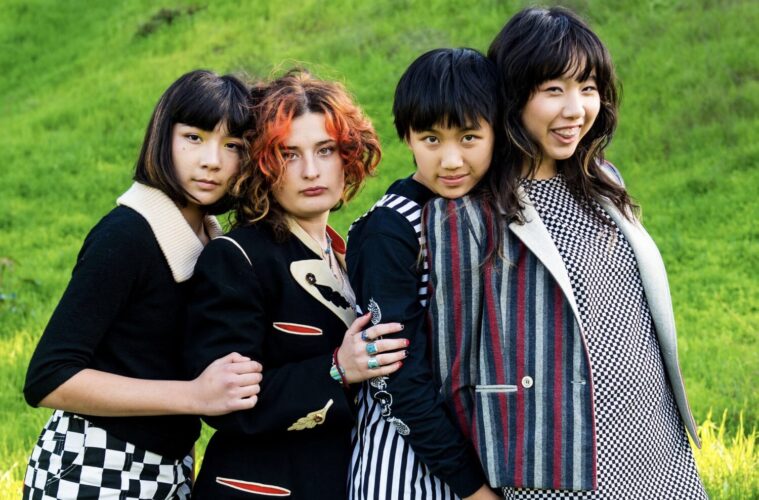If Coachella 2023’s lineup made a lot of music fans feel like they were out of touch in terms of what “the kids are listening to these days,” it also offered an easy way to discover precisely that via a user-friendly YouTube livestream of the festival. Sure, people of all ages still endured the expansive music fest, but many who might not have otherwise opened their minds to the new music lineup were able to do so from the comfort of their couches. L.A.’s youthful viral sensations the Linda Lindas surely won over their share of new fans, young and old, last month.
During their broadcasted Saturday, April 15 set, they encountered persistent sound problems (the mics repeatedly went out). But the technical difficulties led the girls – guitarist Bela Salazar (18), bassist Eloise Wong (15), guitarist Lucia de la Garza (16) and drummer Mila de la Garza (12) — to make the show an interactive exchange with fans that was inspiring and exhilarating to watch. They turned what could have been a disaster into a jubilant, career-defining moment.
Which shouldn’t have been too surprising for anyone who’s followed their growth as a band. Everything that led up to that point, and to now, has had a similarly pivotal impact on their trajectory, and all very organically, too. The Linda Lindas may have been in the right place at the right time (a few times), but they’ve also said the right things when they needed to be said, and they’ve represented their generation and their cultures – Salazar is Salvadoran and Mexican, while Wong is Chinese and her cousins the de la Garza sisters are half Mexican/half Chinese – in a very real and irresistible way. This band feels like it was simply meant to be.
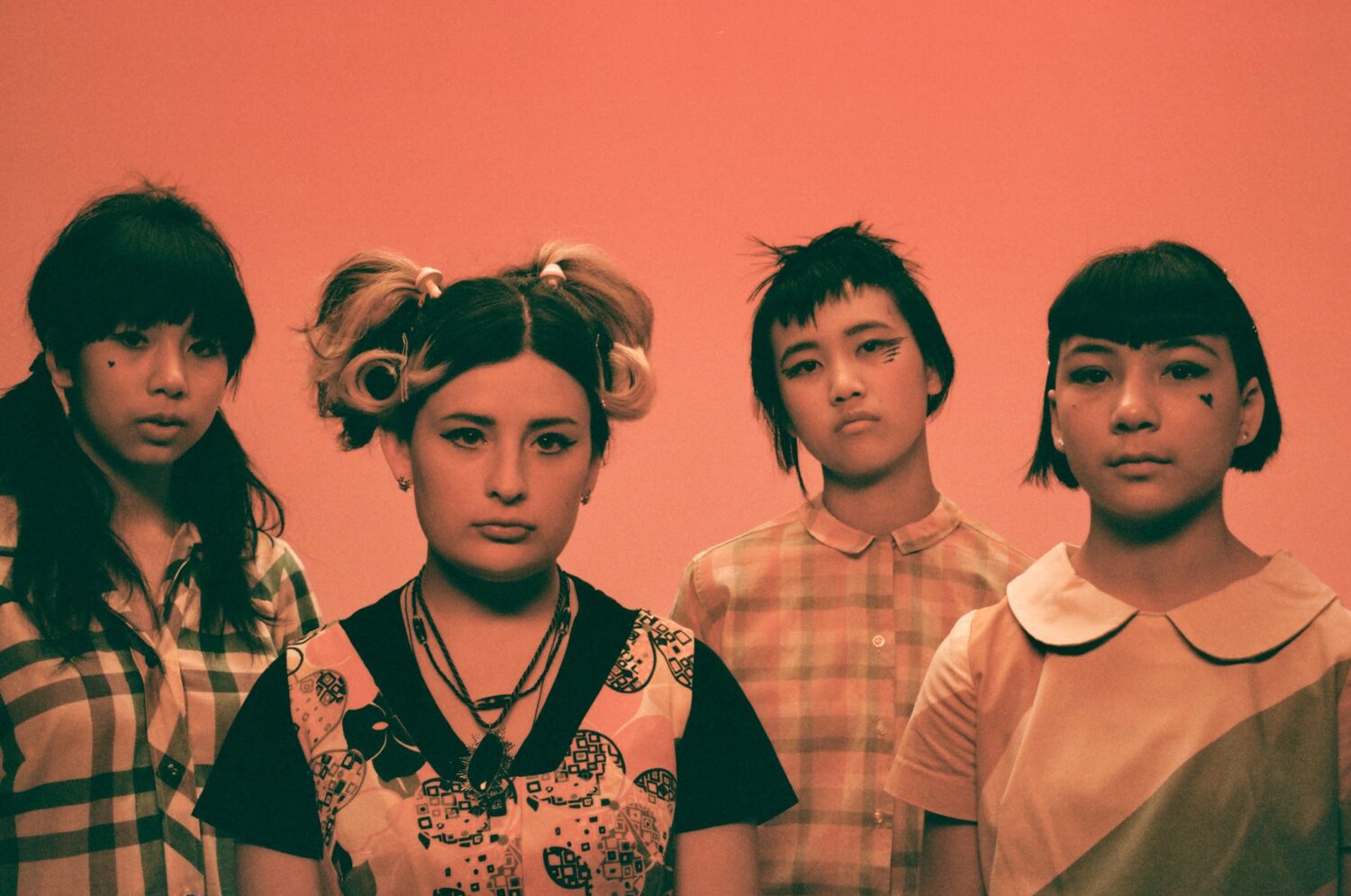
The Linda Lindas’ Lucia de la Garza, Bela Salazar, Eloise Wong and Mila de la Garza (Zac Farro)
Their beginnings were auspicious to say the least. They first played together as elementary school kids at Girlschool LA, the music and ideas festival co-created by former Airborne Toxic Event violinist Anna Bulbrook to nurture and support female music artists. Held at the Bootleg theater, the 2018 event featured huge names like Garbage’s Shirley Manson, Fiona Apple, the Yeah Yeah Yeah’s Karen O and Best Coast’s Bethany Cosentino. But the highlight of the gathering is still remembered as Kristin Kontrol (of the Dum Dum Girls) and her cover band, made up of very young kids including all four of what would become The Linda Lindas when they were 7 to 13 years old.
After the raucous set, Bela, the oldest and most experienced musician, asked Eloise and her cousins – sisters Lucia and Mila – to back her up on a few songs for a show at the Hi-Hat in Highland Park (which, like the Bootleg is sadly now shuttered). They’ve been growing their fanbase – and “growing up” themselves – ever since.
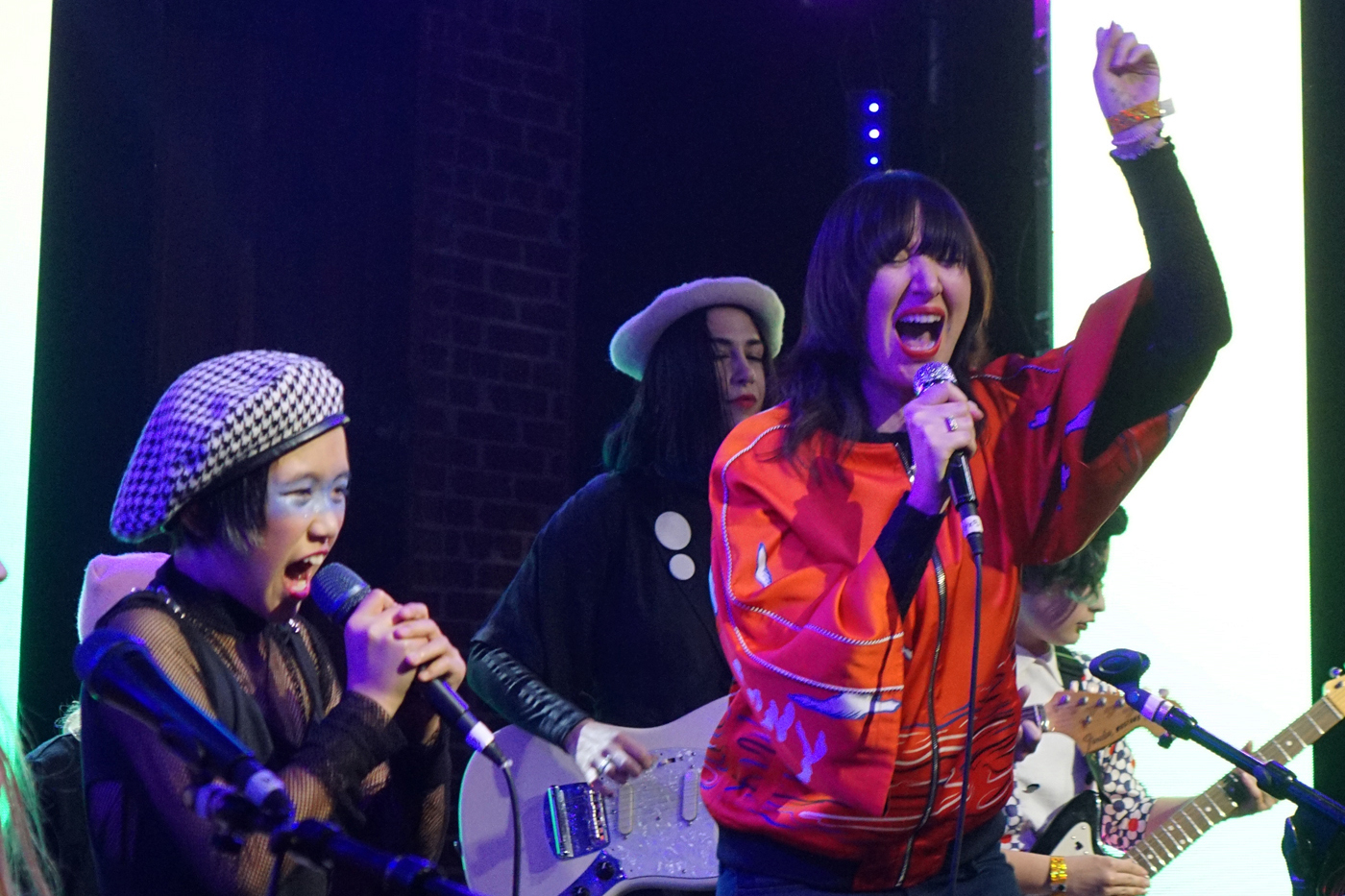
Eloise Wong, Kristin Kontrol, Karen O and and Bela Salazar at Girlschool 2018 (Martin Wong)
After School Special
Chatting with all four members just after their triumphant Coachella shows (and literally after school) at an Eagle Rock diner, they are effervescent yet mature, innocent yet wise. Lucia and Mila’s mom is there, but she remains largely quiet (all the band’s parents prefer not to be quoted in media about them, which allows the members to truly represent themselves; and after the whirlwind of the past few years, they are pros). They speak thoughtfully and confidently about their inspirations, their experiences and their music.
“Honestly, doing Coachella was very surreal. Because, you know, we’re Californian. And it’s such a huge deal here in California, as well as around the world… everywhere really,” says Lucia, as the milkshake she ordered is loudly blended behind us. “To actually be playing it, it’s such a benchmark… It shows how far we’ve gotten in such a short amount of time. I mean, we’ve been doing this for what, four or five years and like, we were playing Coachella at 12 – my sister Mila is 12.”
Mila might in fact be the youngest person to ever play Coachella, and considering none of the members ever went to the fest as patrons, it’s quite an accomplishment. In between the two Coachella weekends, the band even opened for Blondie -who were also on the fest lineup- at the Greek Theater. And it’s not the first major opening slot they’ve scored (they’ve previously played with Bikini KIll at the Palladium and the Yeah Yeah Yeahs at the Hollywood Bowl).
“It was Blondie, Blondie, Blondie! Glen Matlock is so tight!” interjects Wong, whose tastes veer heavier, about the addition of the Sex Pistol on bass. “It was really fun to play Coachella, but a lot of it for me was getting to see all of the other bands like Soul Glo and Scowl and Destroy Boys – they were all on our stage.”
An enclosed space with chandeliers, air conditioning and a dark ambiance, the Sonora tent showcased a lot of up-and-coming bands in what the Desert Sun called “ a venue within a festival environment.” It offered mostly young new bands with the exception of Blondie. The Linda Lindas seemed to be the only band who encountered mic issues and it was clear the crowd was with them all the way, either way.
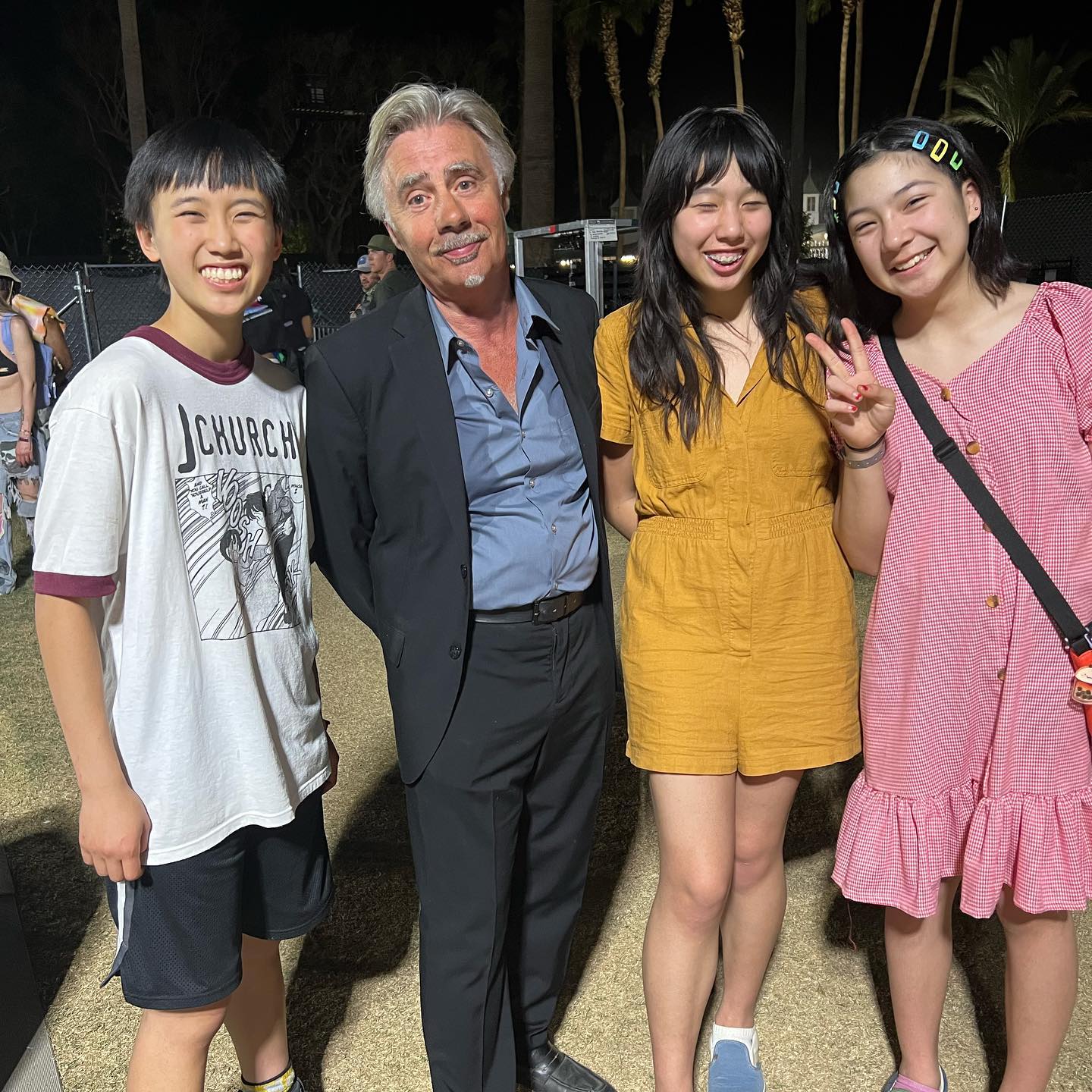
Wong and the de la Garza sisters with Glen Matlock backstage at Coachella (Martin Wong)
“I think that at the end of the day, even in life, things happen and so we have to learn how to keep going,” says Salazar. “There were people there that came to see a show, so we needed to deliver, you know, and keep going and not get mad at the situation.”
“Part of our show is having fun with it. If we’re having fun, the audience is having fun and it’s all cool,” adds Wong.
Growing Up
The joy the young band brings to the stage is what made them so appealing from the start. Each grew up around music and creative L.A. culture, so it’s part of who they are. Bela’s parents are in the arts, while Lucia and Mila’s dad, Carlos de la Garza, is a successful producer and engineer. Eloise’s father is Martin Wong, co-founder of the iconic Asian-American magazine Giant Robot and curator of Save the Music Chinatown (the popular fundraiser series for the music department at Castelar Elementary where Eloise was a student). The all-ages DIY punk rock shows featuring legendary local bands and some new groups were some of the first gigs the Linda Lindas played and where they honed their chops. Exposure to so many of L.A.’s seminal performers clearly rubbed off.
The Lindas Lindas’ sound varies, depending on whose vocals are up front. Some songs are sweet and wistful, while others are aggressive and snarling. There are references to the band’s heritage – Salazar even sings in Spanish on a number – and their name comes from Japanese filmmaker Nobuhiro Yamashita’s 2005 movie called Linda Linda Linda, which inspired the Blue Hearts’ Japanese rock song “Linda Linda,” a number Wong sings at shows (she doesn’t know Japanese, but so she sings it phonetically).
Their output recalls the Go-Go’s, the Muffs and Bikini Kill (they cover all three confidently), but as their Epitaph debut full-length Growing Up, which came out last year, makes clear, their musical point of view as Gen Z, non-white females is decidedly their own.
During a benefit in support of Jackie Goldberg’s School Board run, the LL’s covered Bikini KIll’s “Rebel Girl,” which somehow got back to singer Kathleen Hanna, who shared a clip of it on Twitter stating, “when the cover surpasses the original.”
“I don’t agree with that,” insists Lucia, humbly. “I just remember it. It’s just like in my mind always now.”

The Linda Lindas on stage at their sold out Fonda Theater show late last year (Charlotte Pinkerson)
Hanna asked the band to open for hers at the Palladium soon after, less than a year from its official formation. Amy Poehler happened to be at the show, and she invited them to perform the cover in her Netflix teen comedy about punk zines called Moxie. Things were happening fast and phenomenally for the band, and then COVID-19 hit. The pandemic and the shutdowns were hard for everyone of course, but it was particularly difficult for kids and teens for a number of reasons. The music biz also suffered and it’s been in a state of recovery from canceled tours and shows ever since. But the Linda Lindas somehow turned the tough times into something musically raw and revelatory.
Too Many Things
“Right before we went into lockdown, this boy from my school said to me, ‘My dad told me to stay away from Chinese people because of the Coronavirus thing,” Mila, who wasn’t even 10 at the time, shares of the inspiration behind the band’s best known original number. “I said, ‘well, I’m Chinese” and he quickly got away from me. I went home. We talked about it and I was like, ‘this is really messed up.’ I was really, really confused too because I didn’t even know about the virus yet, it was early-on. Like what did a virus have to do with staying away from Chinese people?”
Soon we’d all know, as former President Trump spread his ignorance and fear about COVID and where it came from during White House press conferences and on social media. Suddenly AAPI hate started to grow in the U.S., and what Mila had experienced became an all too frequent reality for Asian Americans.
As the lockdown went on and the band started to experiment with writing its own original material (independently and together), revisiting this important topic felt natural and right. During the shutdowns, Mila and Eloise got on the phone and fleshed out a song about the comments “that people get away with,” during a 4- to 5-hour session, adding the topic of sexism to the issue of racism they had each experienced and hatching the catchy and cathartically angry “Racist, Sexist Boy.”
They debuted the track during a live-streamed pandemic performance at the LA Public Library in 2021 alongside a song about a member’s cat “Monica,” and a bunch of covers. It didn’t make much of an impact until a month later when the library shared the set and a separate clip of the song to celebrate AAPI Heritage Month, which promptly went viral (as of this writing it’s at 824,000 views and Epitaph’s share of it has over a million). They said perfectly what many Asian people had been feeling and it channeled the frustrations that many young people in general were feeling, as well. It turned the L.A. band into national punk kid heroes and suddenly they were everywhere with publications like Pitchfork and the New York Times singing their praises.
To that end, as french fries are chomped and shakes are slurped, we ask the band about naysayers. These young rockers have achieved a level of success and notoriety that older musicians dream of their entire lives and it’s come quickly, if unexpectedly, and seemingly pretty easily. It’s trendy to call anyone with connections “nepo babies” these days, but that narrative ignores the fact that opportunity only gets you so far. The current crop of second generation L.A. music scene bands – like Starcrawler, Frankie & the Studs, Fidlar, the Pink Slips and the Side Eyes – make exciting music and offer charismatic stage shows. If that partially comes from what they were exposed to growing up, so be it. Bands like the aforementioned and the Linda Lindas are keeping punk, rock and alternative music alive and in a manufactured pop-driven world, and that is a gift. We must protect this at all costs, as they say.
“The positivity that we’ve gotten is way more than the negativity,” Wong says, to which Salazar adds, “We’ve actually been super lucky that like, on social media, there hasn’t been like a crazy amount of bad stuff. I mean, there are obviously comments sometimes, but we don’t feed into that. For the most part, I feel like everything’s been super positive, which has been nice.”
Lucia says that she has noticed some adults, specifically male, tend to pass them off as only for kids or women, saying, “Oh, my wife really loves your band. Or like, my daughter really loves your band. Just implying he doesn’t like it,” but she hopes the Linda Lindas can be for everyone.
“I feel we’ve won over some of those dudes who have a stick up their butts,” adds Salazar. “We’re young, and sometimes people assume we don’t know things or we don’t want to know things. But we want to be involved, and we want to learn and grow.”
“They’re incredibly talented and adorable and have wonderful things to say,” Bethany Cosentino of Best Coast – who joined them on stage at their sold-out Fonda Theater show last year, told the NY Times recently. “They made me feel hopeful. They have an energy that maybe the world will be a better place.”
It remains to be seen how the band might evolve as its members mature, but here’s hoping their quirky style (Salazar has designed a lot of their looks) and their wholesome vibe remain. The Epitaph release, which was largely written during the pandemic, shows a lot of growth in range already – serving simple hooks and catchy melodies one moment and ranty chants and thrashy riffs the next. Mostly, it captures the angst and zeal of the moment in which it was made.
As the gals prepare for finals at school and a summer vacation opening for Paramore (their parents join them on their touring journeys), they also are working on their next record. Now that the world is opened up again, the themes and ideas promise to open up as well. Their first new single, “Too Many Things,” provides a bouncy burst of energy and an emotive slice of life repping how the teenagers are navigating music, their identities as rockers and their relationships.
Whatever comes next for the Linda Lindas, we expect them to be as exuberant and empowered as they are right now about what they do, even as they move into adulthood– just like the groups who influenced them to rock in the first place. The Go-Go’s Gina Schock, who’s joined them onstage, calls them “the new Go-Go’s and then some.”
“I have watched this band over the last several years, and they just knock me out,” Schock enthuses. “I am a huge fan of their album Growing Up. Their songwriting keeps getting better and better as does their musicianship. Watch out world!”
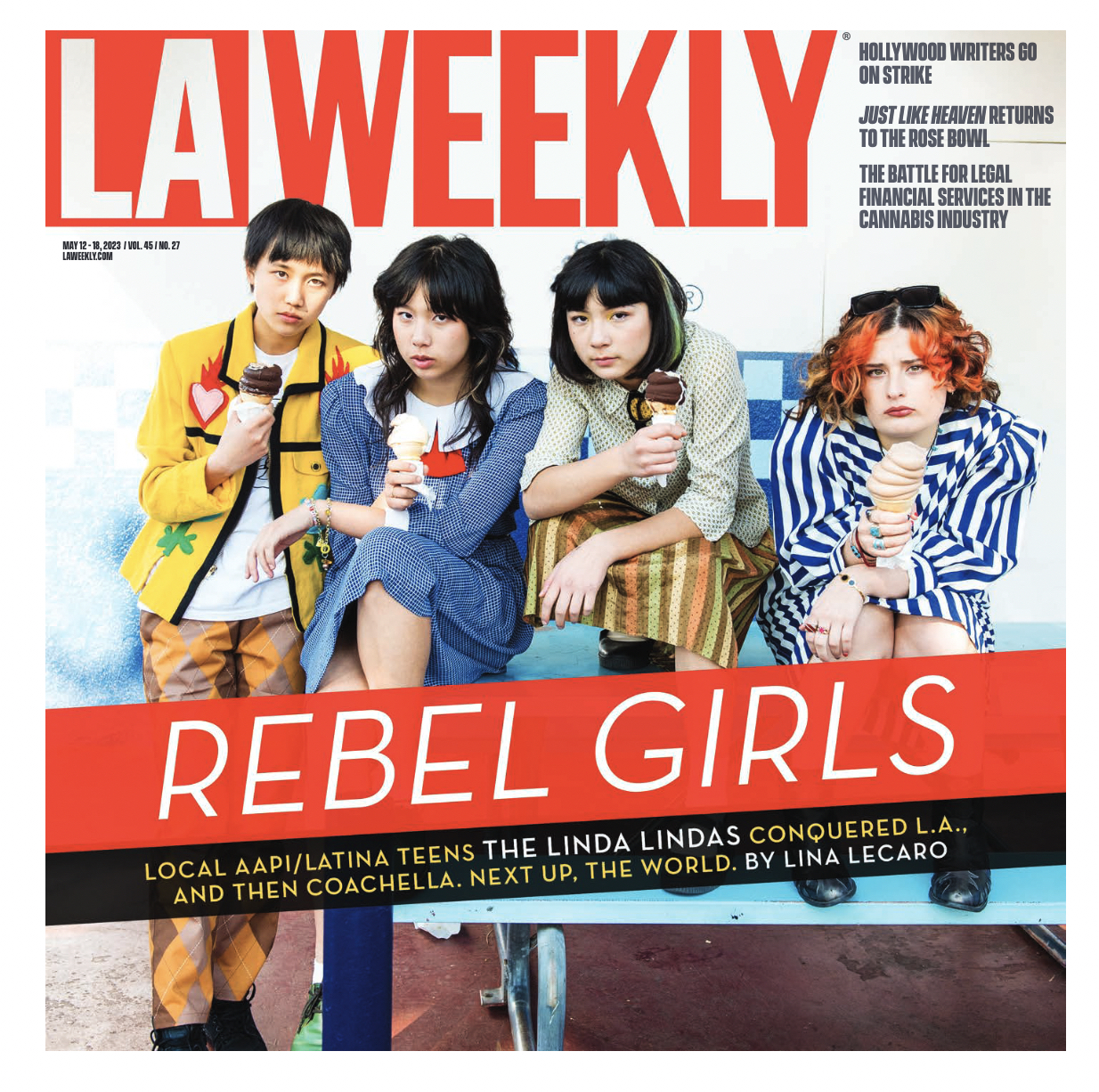
Editor’s note: The disclaimer below refers to advertising posts and does not apply to this or any other editorial stories. LA Weekly editorial does not and will not sell content.
Advertising disclosure: We may receive compensation for some of the links in our stories. Thank you for supporting LA Weekly and our advertisers.

